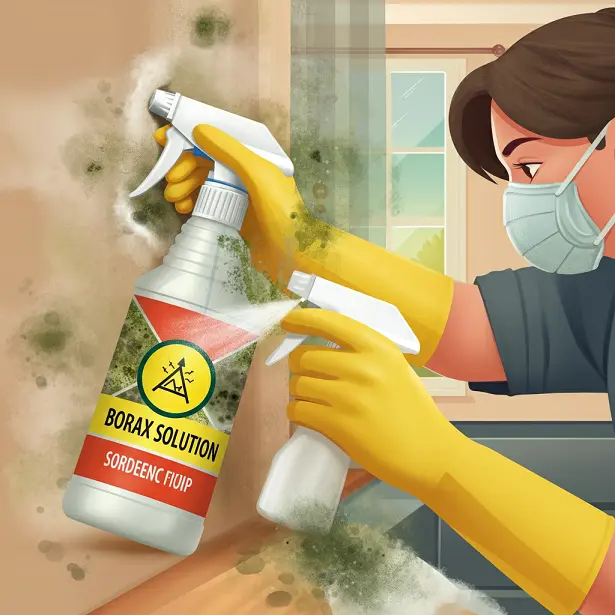How Long Does It Take for Tree Roots to Die After Cutting Down a Tree?
Cutting down a tree is a big decision, but dealing with the roots left behind can be just as challenging. Many homeowners wonder how long it takes for tree roots to stop growing or die after a tree is cut down. The timeline depends on several factors, including the type of tree, the size of the root system, and the chosen method for root removal. Here, we’ll explore what happens to tree roots after the tree is cut, what can speed up the process, and when stump grinding might be the right option.
Table of Contents
What Happens to Tree Roots After a Tree Is Cut Down?
When a tree is cut down, the remaining stump and its roots remain alive for a certain period. Although the visible part of the tree is gone, the underground root system still draws moisture and nutrients from the soil in an effort to regrow. This is particularly true for species like poplars, willows, or maples, which are known for their aggressive regrowth tendencies.
Without the energy from photosynthesis (because the leaves are gone), the roots will eventually stop thriving. However, the length of time they survive and decay depends on factors like the tree species, soil conditions, and whether the stump was treated or left untouched.
How Long Does It Take for Tree Roots to Die After Tree Is Cut Down?
The time it takes for tree roots to die can vary widely. For most trees, the roots begin to decay naturally after the tree is cut down and start to die within a few weeks to a few months. However, for resilient species or trees in ideal growing conditions, the roots can survive for up to five years or even longer.
If the stump and roots aren’t removed or treated with an herbicide, they may continue to sprout suckers (small shoots of regrowth). The lifespan decreases significantly when the roots are left without access to water, nutrients, and energy.
Key Factors Affecting How Long Roots Survive
Several factors influence the time it takes for roots to dry out and rot after a tree is cut down:
- Tree Species: Fast-growing, hardy species tend to have roots that take longer to die. Meanwhile, slow-growing trees may dehydrate and die more quickly.
- Size of the Tree: Larger trees with extensive root systems tend to take longer for their roots to fully die off and decay.
- Ground Moisture Levels: Moist and nutrient-rich soil can sustain roots longer than dry or poor soil conditions.
- Initial Treatment of the Stump: Applying an herbicide or cutting off sprouts can accelerate root death.
Will Tree Roots Grow Back After Cutting?
Yes, in some cases, tree roots can regrow after cutting. Certain species of trees are known for their resilience and ability to regenerate. Even after the trunk is cut down, these trees can send up new shoots or suckers from their roots. Suppose these suckers are left unchecked and exposed to sunlight. In that case, they can eventually form new leaves that start the photosynthesis process all over again, allowing the root system to regain energy.
For trees prone to regrowth, killing the roots actively or removing them completely is often necessary to prevent issues later.
Stump Grinding Before and After the Process
Stump grinding services are among the best methods used for managing a tree stump along with the roots after a tree has been felled. The stump is usually transformed into smaller chips of wood using a specialized machine which enhances the looks of the area and makes it easier to manage.
Before Stump Grinding:
- The stump and roots remain firmly in place and may start sprouting or decomposing slowly.
- The area may be uneven and difficult to use for future gardening or landscaping.
- Hidden roots can attract pests like termites or fungi.
After Stump Grinding:
- The stump is cleared, and the surface becomes easier to landscape or plant over.
- Although grinding doesn’t eliminate all of the tree roots, it drastically reduces the chances of regrowth.
- Leftover wood chips can be repurposed as mulch for the garden.
While stump grinding doesn’t remove all the roots, the smaller pieces left behind typically decompose much faster compared to an intact stump.
Natural Root Decay Timeline
If left untreated, roots underground will naturally start to decay. This process can take anywhere from 1–10 years, depending on several factors:
- Tree Type: Softwood trees like pine generally decay faster than hardwood trees like oak.
- Size of the Root System: Extensive root systems take more time to break down fully.
- Moisture Levels: Overly dry or compacted soil can slow decomposition.
During root decay, microorganisms like fungi and bacteria play a vital role in breaking down the organic material. Over time, the roots will disintegrate and enrich the soil.
How to Kill Tree Roots Faster
If waiting several years for the roots to decay naturally isn’t an option, there are ways to speed up the process:
- Chemical Treatments: Applying herbicides or stump killers prevents roots from sprouting and accelerates the dying process.
- Mechanical Removal: Dig up smaller stumps and roots by hand or hire professionals for larger, stubborn systems.
- Epsom Salt or Rock Salt: Drill holes in the stump, fill them with salt, and add water. This method dehydrates the roots more quickly.
- Burning: Controlled burning of the stump and roots (where legal and safe) can eliminate them rapidly.
Each method has its pros and cons, so choose one that works for your specific situation.
Why Remove Stumps and Roots?
Leaving stumps or roots behind after cutting a tree can cause several issues:
- Pest Infestations: Stagnant stumps attract termites, ants, and other pests.
- Regrowth Problems: Certain trees sprout aggressively and can become an ongoing headache.
- Trip Hazards: Leftover roots can create uneven surfaces and become a safety risk.
- Aesthetics: An old stump can detract from the overall look of your yard.
Removing the stump or treating the roots ensures your space remains safe and visually appealing.
Comparing Removal Methods for Dead Roots
When deciding how to handle tree roots, you’ll need to weigh the pros and cons of each method:
Pros & Cons
Stump Grinding Fast and effective May leave some root remnants
Chemical Treatments Simple and inexpensive Can take weeks or months
Digging by Hand Thorough and natural Labor-intensive and slow
Professional Removal Comprehensive Can be costly
Choose the method that makes sense based on time, budget, and your yard’s specific needs.
FAQ
How long does it take for roots to completely rot?
Depending on the tree type and environment, roots can take 1–10 years to fully rot without intervention.
What’s the fastest way to eliminate tree roots?
Chemical treatments, stump grinding, or burning are some of the quickest ways to get rid of tree roots.
Can a tree grow back from its roots?
Yes, certain tree species can sprout new growth from their roots even after the trunk is cut down.
Is stump grinding enough to kill all roots?
No, stump grinding removes the main stump but may leave some roots behind. These roots will usually die over time.
Why do roots take so long to decay?
Tree roots are dense and tough, making them resistant to decay. Moisture, soil conditions, and the root type all contribute to timing.
Final Thoughts
Understanding how long tree roots survive and what options you have for their removal is essential for maintaining a healthy and functional yard. Whether you opt for natural decay, stump grinding, or chemical treatments, finding the right solution ensures your landscape remains safe and beautiful for years to come.







